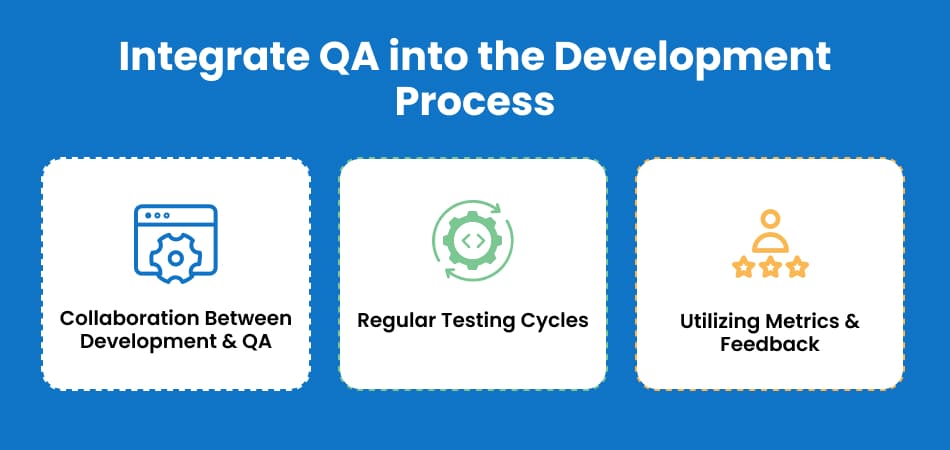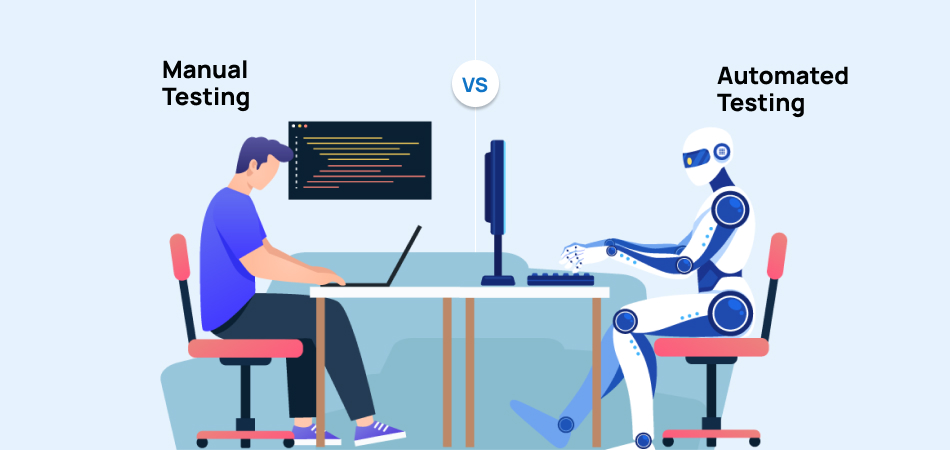The digital landscape today is faster-paced than ever. And customer expectations as well as market trends are changing rapidly. That puts companies under immense pressure to launch great products quickly. This premise makes two things crucial—speed and product/service quality. However, more often than not, it is easy to lose sight of one in favor of the other. This is where Software Testing and Quality Assurance (QA) come in. Effective Software Testing practices ensure that products reach the market swiftly without compromising on their quality. In this blog, we’ll explore how Software Testing & QA affect the time to market and how it can shorten it too.
Understanding Time to Market (TTM)
What Is Time to Market?
Time to Market refers to the period between the initial conception of a product and its release to end-users. In highly competitive and fast-paced industries like software, reducing TTM can be a significant differentiator.
Why is Time to Market Important in a Competitive Landscape?
Any competitive market such as tech, media or even consumer goods market is marked by rapid evolution of customer expectations. A short time to market allows businesses to get the first mover’s advantage, gain market share, and respond quickly to trends.
However, there is a delicate relationship between quality of a product and the time to market. Launching a product without proper Testing & QA, in order to meet shorter timelines, often results in buggy releases, poor user experiences, and long-term brand damage.
The Role of Software Testing & Quality Assurance in TTM
What Are Software Testing & Quality Assurance?
Software Testing is the process of evaluating and ensuring that a software or app does what it’s intended to do. Quality Assurance is a systematic process designed to ensure that products or services meet specified standards and customer expectations. It involves planned and structured activities such as Testing, reviews, and audits to detect and prevent defects throughout the development lifecycle.
The aim of both these disciplines is to improve processes to deliver consistent, reliable outcomes. This ensures that end-products are high quality, functional, and free of critical errors before reaching the market or end-users.
How Do They Impact TTM?
Both these activities impact Time to Market (TTM) by streamlining the development process and preventing costly delays caused by defects. Effective Testing & QA identifies and resolves issues early, reducing rework and ensuring smoother, faster deployments.
Automation, continuous testing, and proactive strategies like shift-left testing enhance overall efficiency, enabling quicker release cycles.
While robust Testing & QA processes may seem time-consuming initially, they save valuable time by minimizing post-launch fixes and maintaining high product quality. In turn, this leads to faster market entry with fewer risks, delivering better customer experiences and maximizing competitive advantages without sacrificing quality.
On the other hand, quality assurance, if done reactively, focuses on fixing bugs post release, which means additional time investment, thus increasing the time to market.
The Risks of Skipping Testing & QA

Skipping Testing and QA introduces significant risks that can undermine a product’s success:
Product Defects
Without thorough Testing & QA, bugs and errors may go unnoticed, leading to critical malfunctions.
Poor User Experience
Glitches, crashes, and usability issues result in frustrated customers and high churn rates.
Reputation Damage
Launching subpar products can damage brand credibility and lead to negative reviews.
Increased Costs
Fixing defects post-release is costlier and can involve expensive recalls, patches, or additional support.
Security Vulnerabilities
Skipping Testing & QA also increases exposure to potential security breaches and data leaks.
Compliance Issues
Lack of Testing & QA may lead to non-compliance with industry standards and regulations, giving rise to potential litigation.
Key Testing & QA Practices that Shorten TTM Without Sacrificing Quality
Automated Testing
Automated testing accelerates the testing process through rapid execution of repetitive, complex, or extensive test cases. Unlike manual testing, automated tools can run thousands of tests simultaneously, ensuring faster detection of defects and allowing quick fixes.
Continuous testing with automated scripts integrates seamlessly into Continuous Integration/Continuous Deployment (CI/CD) pipelines, reducing the time spent on regression testing and minimizing human errors.
This leads to more frequent releases and ensures high-quality products with shorter turnaround times, enabling businesses to deliver updates, new features, or products more rapidly and with greater confidence.
Continuous Integration and Continuous Deployment (CI/CD)
CI/CD automates and streamlines the software development process. With continuous integration, code changes are automatically integrated, tested, and verified, allowing teams to identify and address issues early. Continuous deployment ensures that code changes can be quickly deployed to production with minimal manual intervention.
Together, CI and CD reduce development cycle times, minimizes integration issues, and enables rapid releases of high-quality software. This approach accelerates product delivery, lowers risks of deployment errors, and ensures that new features and fixes reach users faster while maintaining consistency and reliability.
Shift-Left Testing
Shift-left testing moves testing activities earlier in the software development lifecycle. This proactive approach allows teams to identify and fix bugs during initial development phases, rather than waiting until the end. Early detection prevents defects from compounding and becoming more complex, reducing the need for time-consuming rework.

Shift-left testing promotes continuous feedback between developers and testers, streamlining the development process, minimizing delays, and boosting product quality. As a result, fewer post-launch issues arise, enabling faster, smoother product releases with a focus on both speed and reliability.
How to Best Integrate Testing & QA into the Development Process
To maximize efficiency and ensure high-quality releases, Testing & QA must be seamlessly integrated into every step of the development lifecycle. Here are three best practices to consider:
Collaboration Between Development and Testing & QA Teams
QA achieves the best results when developers and testers work closely throughout the development process, rather than waiting until the end. By integrating QA early and fostering strong collaboration, both sides share accountability for quality, making defect identification and resolution faster and more effective.
This shift-left testing approach encourages mutual communication, feedback loops, and cross-functional teamwork, ensuring that all perspectives—functional, technical, and user experience—are considered from the start.
Regular Testing Cycles
Continuous testing at regular intervals is vital for catching defects early and preventing them from escalating into major issues. Establishing frequent testing cycles, such as during each development sprint or milestone, ensures that code changes are consistently validated.
This not only maintains high-quality standards but also prevents bottlenecks and reduces last-minute surprises. Consistent testing reduces rework, aligns development efforts, and accelerates overall release timelines, creating a smooth path from conception to launch.

Utilizing Metrics and Feedback
Data-driven Testing & QA provides valuable insights for optimizing the development process. Tracking key quality metrics such as defect density (number of bugs per unit of code), code coverage (the percentage of code tested), and user feedback allows teams to identify patterns and areas for improvement.
Actionable data helps prioritize which defects to resolve, focus on high-impact fixes, and improve testing strategies. By learning from past performance and refining processes, teams can continuously improve product quality and speed up future releases.
3 Real-World Examples of Products with Poor Testing & QA
Healthcare.gov Launch (2013)
On the very day of the launch of the U.S. government’s Healthcare.gov website, users discovered that the site was riddled with technical issues, making it nearly unusable for millions of users. The website was meant to enroll uninsured into affordable healthcare plans on a mass scale. However, due to the buggy website, only as few as 1% were able to do it successfully, thus rendering the project a failure.
Inadequate Testing & QA during development and integration led to errors, slow performance, and public backlash. This high-profile failure clearly highlights the costs of neglecting robust QA processes in large-scale projects.
Samsung Galaxy Note 7
The Galaxy Note 7 is often cited as a cautionary tale in product development and quality assurance. Rushed production and inadequate Testing & QA, primarily because of a highly competitive market pressure led to defective batteries, causing devices to overheat and, in some cases, catch fire. The recall and subsequent discontinuation of the product cost Samsung an estimated $5 billion and damaged customer trust.
Windows Vista
Microsoft’s Windows Vista carries the infamy of being one of the least favorite versions of the Window operating system. It was plagued with compatibility and performance issues from its launch.
Driver incompatibilities, slow performance, and frustrated users can be tied back to the lack of proactive quality assurance. While the company aimed to rapidly evolve from Windows XP, it backfired due to inadequate attention to user needs and software reliability.
Conclusion
Effective Software Testing & QA plays a crucial role in determining time to market without compromising on quality. From automated testing and CI/CD pipelines to robust collaboration, Testing & QA practices ensure that products meet high standards without slowing down their release. As demonstrated by high-profile failures like the Galaxy Note 7 and Healthcare.gov, poor Testing & QA can derail even the most ambitious launches, resulting in high costs and damaged reputations.
Adopting a proactive approach offers a competitive edge, balancing speed with quality to create exceptional user experiences. As you evaluate your current Testing & QA practices, remember that cutting corners in QA might save time initially but can lead to far greater costs in the long run. Quality and speed need not be mutually exclusive—with the right Testing & QA strategy, you can achieve both.



